Sales have become much more precise because of innovative sales techniques and customer relations software. You want to sell your product to long term customers. To do so, you need to develop leads into customers.
One of the first things to understand about finding customers is that you have developed a product that solves a problem. When you show customers how your product fulfills a need for them, you can convert them into long term customers.
Getting your customers ready to listen to your sales pitch is called lead marketing. Before the customers buy your product, your sales team will move them through a sales process to prepare them. Your sales team works with qualified leads using a variety of techniques.
Qualify your leads
It’s important to clearly identify where your customers are in the sales process. So often, sales are lost when sales teams pass along unqualified leads.
If, during the process, potential customers are given a readiness factor as they move along, everyone on your team can look at your salesforce software and track their progress.
One way to track customer progress is to assign a number to each phase of the lead process. For example, the awareness phase (during which your customer finds out about your product) could be assigned the number 1 through however many sales levels you wish to create.
Customers should work with salespeople throughout the buying process (also known as nurturing leads or building relationships)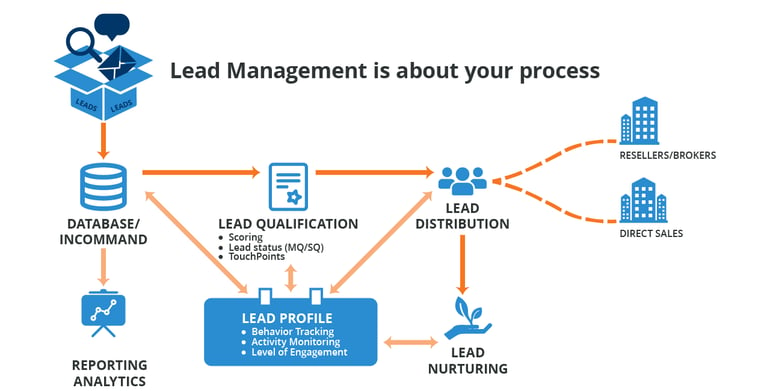
Push Sales
Sales works either through customers finding your product or your salespeople finding your customers. Push sales start with customers learning about your product through your website, advertising, word of mouth, or a mailer.
When customers find your website, you can easily track them after they sign up for your newsletter or informative whitepaper. This type of sales method relies on relationship building as visitors move towards becoming long term customers. Relationship building puts the human connection into the process.
An interested potential customer needs to be nurtured because you want customers to feel like you solve a problem for them, guide them through implementation and training, then support them as they use your product.
There are several well developed methods companies use to distribute leads to their sales people:
- Round Robin: this method entails distributing leads evenly among salespeople. Every person on your sales team will have leads to work with. This method gives everyone a chance to work with customers somewhat equally.
However, bigger accounts or more difficult clients might need a more experienced salesperson. And not all salespeople know the product well, relate to customers well, or handle sales efficiently.
- Top Producer: each company usually has a salesperson or two who is great at working with customers. Some companies give more of their leads to the best salespeople. This technique works well for a manageable number of customers.
But the difficulty with this method is the other salespeople do not have the opportunity to improve their sales techniques.
- Shotgun: this popular method entails dividing everyone into sales teams. Then leads are distributed to each team best suited to handle that type of lead. This puts leads in the hands of more specialized sales teams.
The disadvantage with this method is that you may not have enough leads for each sales team or too few sales teams. Clearly Shotgun works well for larger companies who can train specialized teams.
- Region specific: some companies have sales teams assigned to each region where the company does business. This distribution method works well if each region has enough sales to support marketing and sales efforts.
The downside to this method is some sales teams (or salespeople) may have much fewer sales opportunities than those covering areas where sales are more successful.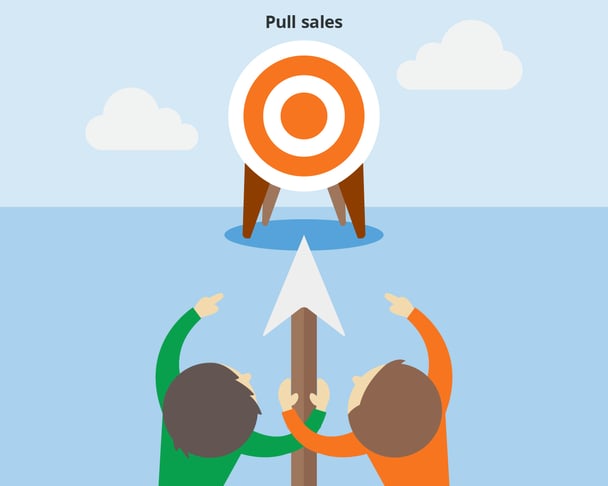
Pull Sales
Pull sales techniques involve putting effort into advertising so that customers want to buy your product before you contact them. The emphasis in this method of sales is designing an effective marketing campaign, then working with customers who have expressed an interest to buy your product.
- Blind pull: companies, using this method, give sales leads equally to each sales person. As with the round robin method, this technique relies on a sales team of equally skilled salespeople.
This method does lead to a slower sales conversion rate because there is less incentive to outperform others on your sales team. Friendly competition encourages people to put in more effort.
- Cherry pick: this method involves offering the best customers to the fastest or most eager salespeople. Cherry picking can introduce competition and incentive for salespeople to be top producers.
But if the person or people assigning leads aren’t handing out leads carefully, then less likely leads can be dropped. Following up on leads that are qualified rather than just an easy sale produces better sales results.
- Shark tank: sharks have a fierce nature, and this method involves fierce competition for sales leads. When each lead is handed out, salespeople try to grab it first. This technique may work in companies where sales happen quickly.
However, some competition is not helpful. Overly rapid or aggressive behavior can hurt moral if some salespeople feel unable to compete or do well. Every so often, this method can introduce energy into the workplace but it does not work consistently. 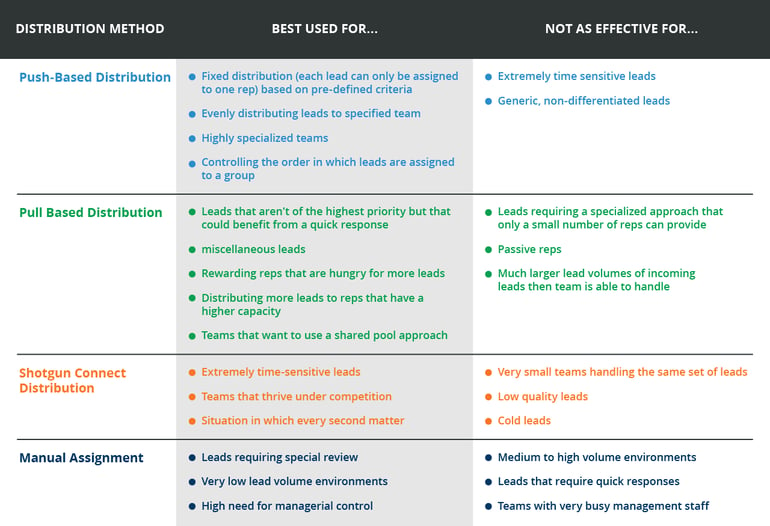
Hybrid Sales
The best way to distribute leads is to use a combination of methods that work well for your company. Doing a little investigating will help your company use distribution techniques that fit your product and sales staff.
Quick response
An important part of any sales process is speed. Customers look for solutions to problems and if you don’t answer their questions quickly, they will look for solutions elsewhere. Distributing leads within minutes or hours (instead of days) allows salespeople to start nurturing relationships and answering questions.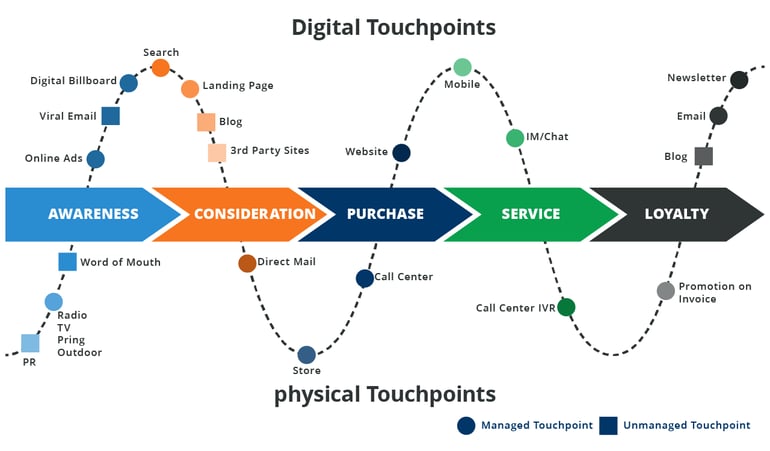
How to Qualify Leads..
At the beginning of this post, I mentioned it is important to qualify leads as part of the sales process. Sales leads need to be tracked to yield information about their progress. There are several methods companies use to find out if a lead would actually buy your product.
One qualifying framework is FAINT which stands for funds, authority, interest, needs, and timing. After a lead is identified, a salesperson needs to determine if the lead could convert into a customer. A series of well-worded questions determines qualification:
- Funds: does the lead have money in the company budget to purchase your product?
- Authority: does the lead have decision making power in his or her company?
- Interest: does the company show actual interest in adding a product or replacing a current product with your product?
- Needs: does your product meet an actual need? (sales work best if the product solves a problem instead of just filling in a gap)
- Timing: is this a good time for the company to purchase and implement a new product?
If your lead pass the FAINT test, salespeople can move him or her towards purchase. There are a number of effective questions that salespeople can use in the sales process and having a list of effective questions is a great way to train your team.
Training
Throughout this post, we have covered methods of assigning customers to team members in your company. But for this to work, you have to have trained salespeople!
These 5 methods are great ways to train salespeople in how to work with your product and how to connect with customers:
- Offer e-learning such as training videos and educational software helps you teach salespeople about your product, how sales work best in your company, and how to work with others.
- Use regular training videos helps to keep knowledge fresh and create a learning environment at your workplace.
- Give regular rewards to thank employees for a job well done. This helps to keep employees motivated.
- Train on the job. The supervisor or boss should regularly look in on sales techniques and other work practices to give guidance and encouragement.
- Share success stories to demonstrate how well the company can do when great practices are used.
How to Best use CRM software
Once leads are determined to be good prospects, your salespeople should track each customer and the progress of that sale. The best way to do that is to use quality software that allows salespeople to input customer information, refer to it, and analyze it. Cetrix Salesforce software can improve your sales process.


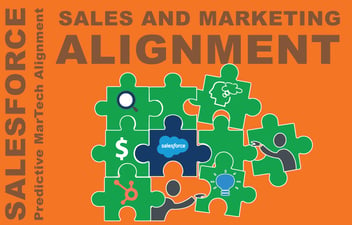
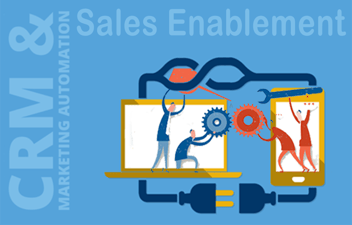
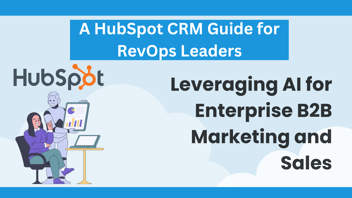
Leave a Comment